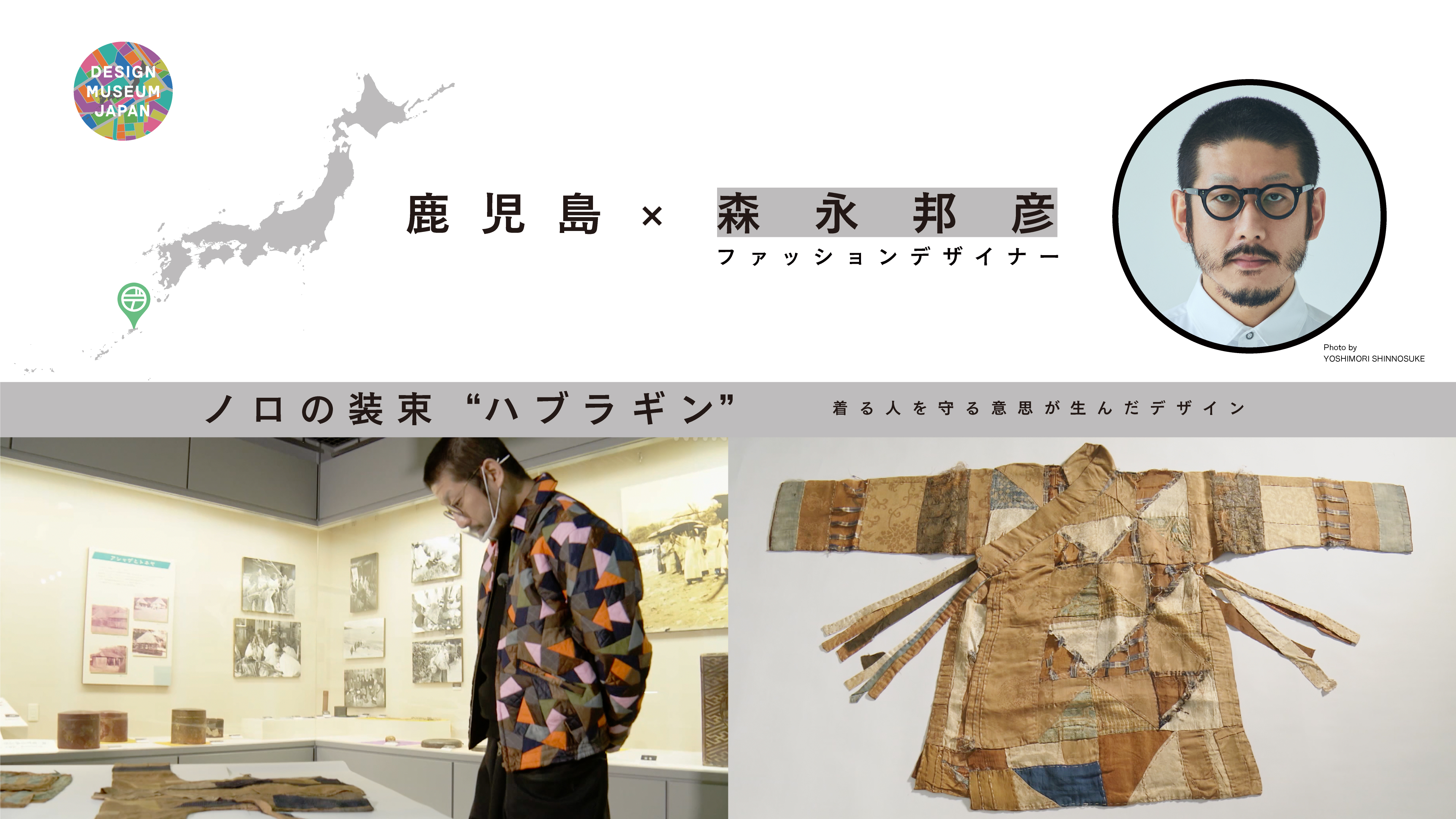The Kochi street market was recognized in 1690, its place and market days laid down by Yamauchi Toyomasa, the fourth lord of the Tosa domain, as a part of domain policy. It has thrived ever since as a market where ordinary people purchase fruit, vegetables and other seasonal foods directly from the producer, together with seafood and prepared dishes of the region, cut flowers and craft items, too. This is a market for all everyday things.
Yoshiyuki Miyamae Designer
Street Market

Yoshiyuki Miyamae researches a street market in Kochi. This licensed market is held every week on Tuesdays, Thursdays, Fridays and Sundays in Kochi City. The Sunday market is one of the biggest in Japan and represents a continuous history of over 300 years from the mid-Edo period. Miyamae visits the Sunday market convinced there has to be a good reason for such longevity.
DESIGN TREASURE
A communication design that has lasted 300 years

Photo: Kochi Visitors & Convention Association
CREATOR

Yoshiyuki Miyamae Designer
Born in Tokyo in 1976
Miyamae joined the Miyake Design Studio in 2001 and was a member of the A-POC project team before joining the planning team and serving as an ISSEY MIYAKE designer from 2011-19. A member of the engineering team for the new A-POC ABLE ISSEY MIYAKE brand from 2021, he now engages in fresh A-POC R&D.

Miyamae views the Sunday market.
The modern city’s beginnings
In Kochi, too, the present system of days and weeks was introduced when Japan adopted the solar calendar in the Meiji period. Various markets hitherto held on different days were combined as a Sunday market on the main street known as Honchosuji, now Densha-dori. The markets reached their modern form in 1926, when market days – every day except Monday – were then set for markets at 6 different locations in the city. They had to close when the city was reduced to ashes in World War II but the Sunday market was revived in 1948 and has now expanded in area and scale to take its present shape.

The Sunday market in the Meiji period. This is the oldest known photograph of the Sunday market.
Photo: Terada Tadashi Shashin Bunko, Collection of the Kochi City Library
The Sunday market has many marginal spaces
Miyamae heads out to the Sunday market on the main street of Kochi’s castle town first thing in the morning. About 300 stalls, most belonging to local farmers, fill two lanes for about a kilometer along one side of the straight road leading east from the Otemon Gate. Every stall has to be run by a local producer. As a creator, Miyamae holds that design is about delivering to the recipient. He notes that the marginal spaces matter, observing how people are connected by the products. “Where the Sunday market offers an attractive marginal space, people flock into it. When a stall sells out, it leaves.” The market blends organically with everyday life.

Miyamae interviews a man selling citrus fruits

Plan of the Sunday market. Each stall uses the same plot every week.
Photo: Kochi City

The stalls are 1.5m deep and 2m wide. Each one sets up its own distinctive canopy.
Everything is frank and open. There is tremendous trust.
Miyamae stops in front of a vegetable stall and watches all the people come up to buy. “I like how there is nothing fancy. Everything is up front,” he says. It is not enough for the producer to make something that is really good, he continues. The delivery matters. “Communication is essential to generate trust between the producer and recipient.” When the stallholders and customers chat about the best products of the season and ways of eating them, ask after each other’s health or what they have on today, it all sounds perfectly casual. “The oranges, vegetables or whatever might all look the same, but they are different when you talk with the producer, and the time spent preparing and eating the food changes, too.” Miyamae observes the root communication of selling and buying.

Regular customers share a joke with the stallholder.

The produce is laid out simply but each stall has its special character.

The pets are regulars, too.

The stallholder helps a customer. The relationships are understanding and natural.
Accumulative experience enriches our life
The stallholders display their names and registration numbers on the shopfront. Once a stall is registered and unless it goes out of business, the rights to the stall and its slot are passed down in the family. “It matters that you can always talk to the same people in the same place,” says Miyamae. “This accumulation is important.” This “always” is all supported by many people from the specialist streetmarket officials at the city hall – a rare post here in Japan – to the old people’s services that coordinate with the city hall, traffic control staff and high school volunteers. “It is not about the colour or shape of the produce,” Miyamae continues, “but the value of harder-to-see human and historical design. This is surely the reason why the market has carried on for so long.” It is passed on from one generation to the next.

A conversation brings a smile to Miyamae’s face.

It is fun to see the seasonal goods, local items and also the occasional rarity.
Photo: Kochi City

The hand-written price tags and slogans on cut-out cardboard strips are also full of character.
Where Can We See This Design Treasure?
The Tosa Sunday Streetmarket
In addition to fresh fruit and vefetables, this market for daily produce also has cakes, prepared dishes such as the local sushi to sweet potato tempura, Tosa knives and nursery plants.
Open every Sunday except January 1-2 and August 10-12.
Hours: From 6:00 am to 2:00 pm.
Place: Otesuji, Kochi City
Inquiries: Kochi City Hall (Streetmarket Support, Commerce Dept.)
https://www.city.kochi.kochi.jp/site/gairoichi/





























